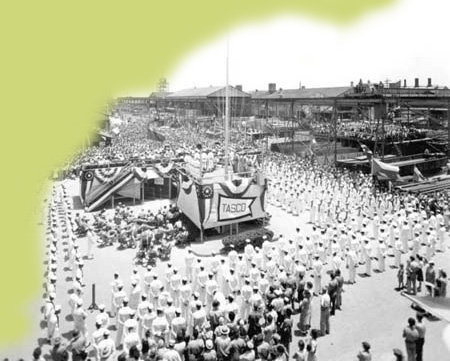War's Impact on Florida: Shipbuilding, Defense Industry, and War Products
World War II presented economic opportunities for Floridians who had suffered through the depression of the 1930s. Wages improved and jobs became plentiful due to the large number of men in service. Women, African Americans, and Hispanics moved into jobs previously dominated by white males. "Rosie the Riveter" became a symbol for the six million American women who entered the work place for the first time. Women worked in more traditional secretarial roles, as well as at jobs in shipyards, aircraft plants, and other heavy industries, proving they had the ability to perform well in many jobs previously reserved for men. Black Americans, meanwhile, worked for victory overseas against fascism as well as at home against racial prejudice.
Florida's industrial output grew during the war, particularly in the area of shipbuilding, and manufacture of war-related equipment and supplies. Liberty ships, patrol torpedo boats, aircraft rescue boats, minesweepers, landing craft, assault boats, and other vessels were built within the state.
Florida shipyards included the Tampa Shipbuilding and Engineering Company (later known as TASCO), the Hooker's Point Shipyard in Tampa, the Wainwright Shipyard in Panama City, the St. Johns River Shipyard Company, the Miami Shipbuilding Corporation, the Pensacola Shipyard and Engineering Company, a shipbuilding company in Orlando, and other smaller firms. "Alligator" amphibious vehicles also were designed and produced at Dunedin.
In addition to shipbuilding and other wartime industries such as armament production, the first commercial oil field in Florida, the Sunniland Field in Collier County, began operations in 1943.


Workers and sailors gather at a Tampa shipyard, July 7, 1944
(Florida State Archives)


